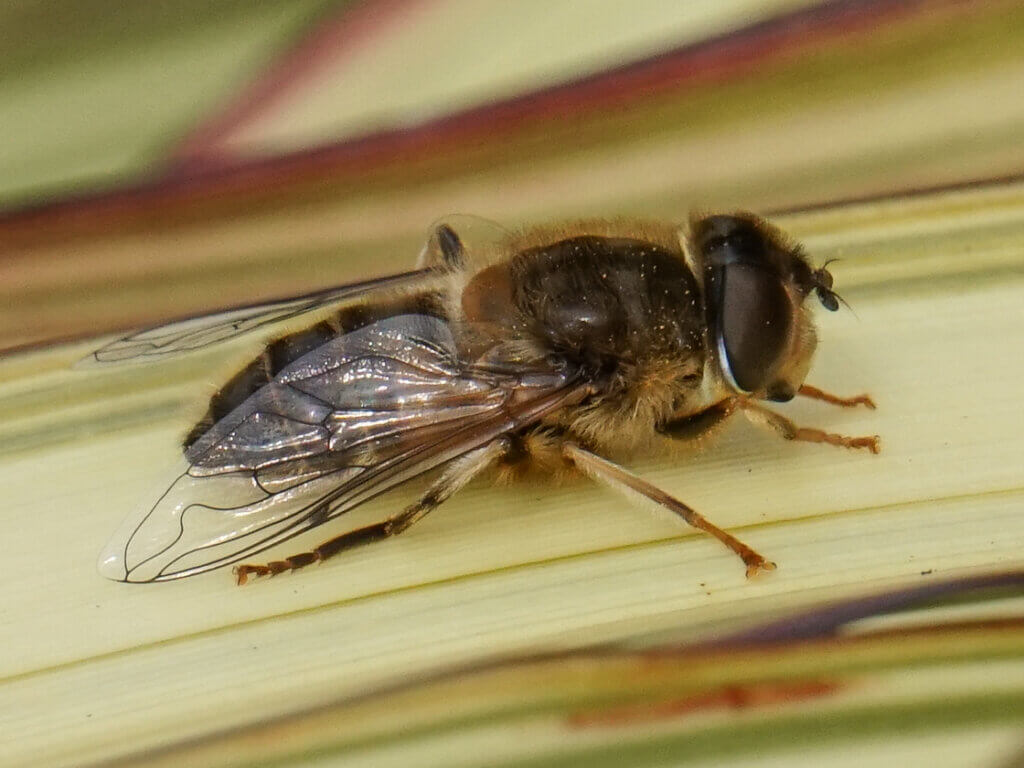
Social Distancing Week 4. Tapered Drone Fly.
This is the most visible insect in my garden at the moment. It is a hoverfly, which mimics a drone Honey bee (Apis mellifera). The male Tapered Drone Fly (Eristalis pertinax) is fiercely territorial and is busy staking out its territory. It can be heard buzzing and seen hovering, from ground level up to 2m or more. One second it will be in front of you the next it will shoot sideways, continuing like this over an area of several square metres. If two flies meet there will be a brief altercation until they establish who the area belongs to. Every so often they will stop for a rest and a feed of pollen or nectar from a handy flower. In this respect they are excellent pollinators. Meanwhile the females are also around, basking on foliage or feeding on flowers. The sexes are similar, except that the female’s eyes do not meet at the centre of the head. The picture shows a female in my garden a few days ago.
There are several species of drone hoverfly in the UK. The two most common are Eristalis tenax and Eristalis pertinax. They are both around the size of a Honey bee. Eristalis pertinax has a more tapered abdomen and also pale front feet (if you get a good enough view). It occurs throughout the UK from March to November and has several broods. The early adults are distinctly furry, the thorax and abdomen being covered in pale hairs however these disappear in the later broods. The larvae are aquatic and are usually found in rotting foliage in ponds or ditches. They are commonly known as rat-tailed maggots because they have a breathing tube which reaches up to the surface. This can be several centimetres long and enables them to breath whilst submerged.
[registration_form]